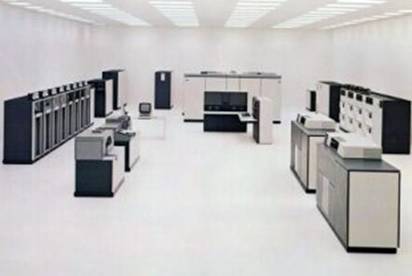
During the last ten years, photocopier vendors have been adjusting their sales strategy to cope with the upheaval caused by improved technology and yet another convergence. In this case, it is the photocopier technology shifting from optical scan to digital scan, turning every office printer engine into a potential copier -provided one could connect it to a high speed scanner- and every digital copier into a fax -provided one included a modem and connected it to a phone line- thus introducing the multi-funtion-printer or MFP.
This change caused chaos in the optical industry in Rochester, NY, home of Baush & Lomb (you know…Ray Ban glasses and photo lenses), Kodak and…Xerox.
Well guess what. Just as the copier manufacturers are getting to the end of a ten year product redesign process and a full restructuring of their distribution channels, we are looping the loop and the Copier sales model is back with a vengeance.
Why do I say this? Simply because if you speak to a business to find out who buys what, they will explain that the equipment itself is specified by the ICT Department, but that all the Toner or Ink is acquired by the Purchasing Department. With the current economic downturn, their mission to reduce costs by sourcing the adequate product at the lowest price has become one of the most important components of the profitability of a commercial business or the efficiency of an administration. Check out this Mission Statement of the Purchasing Dept of a US University. It say it all:
Mission Statement
The mission of the University of xxx Purchasing Department is to obtain quality goods and services at the lowest reasonable cost, while operating at the highest standards of ethical conduct. We accomplish this through cooperative team interaction and continuous quality improvement in support of the overall goals of Finance and Operations. Purchasing’s authority is delegated from the Board of Regents through the President of the University in accordance with the statutes and administrative rules of the State of xxx and the procedures of the Board of Regents.
So what do you think they will buy:
- “branded” refills while the equipment is under warranty…
- cheap, “compatible” refills after that…
- maybe even “recycled” toner.
And where will they purchase it: certainly not from the channel partner who sold the machine in the first place. It’s so much easier to order pencils, paper, chairs, desks, filing cabinets, folders, notebooks…and toner and ink from the office supplies retailer with whom they have an ongoing credit line and who deliver the stuff the next morning.
So how does the printer/copier channel make a living on printers? They don’t: printer vendors are in a deadly fight for market share, continuing to apply the Gillette razor and blades business model (‘give away the handles, sell the blades‘), dropping the price of the ‘tin’ -as they call it- well below their cost price and recovering the profit on the consumables. But completely forgetting that although they, as the vendor, might have a chance of generating some profit from six months of consumables sales, the channel partners who sold the equipment will never sell a single cartridge. this is where the Gillette model doesn’t work: we buy our razor blades from the same place we bought the handle!
In the days of the copier, the dealers used to sign juicy ‘pay per click’ contracts with their customers. Not all printer manufacturers have developed these models for monochrome printers; and when it gets to color printing, only a handful have dared build such a business model because contrary to monochrome, color ink coverage will range from 5% to 300% depending on whether you are printing a text file, a brochure, a presentation or photographs.
Increasingly, Channel Partners are getting tired of doing all the work for nothing and now consider they have nothing to gain from selling printers. They see it as a service to their customers, no more. So if printer vendors want to keep or develop their channel, they are going to have to work hard at finding ways to help their partners keep their share of the profit margin.




 Posted by Francis
Posted by Francis 

 The other day, I went to see “Coraline”. The manually animated movie brought to us in 3D.
The other day, I went to see “Coraline”. The manually animated movie brought to us in 3D.



 them and where the real growth is. Without necessarily taking a “bottom-up” approach, the whole ICT industry has come to the conclusion that it would only be able to access certain segments via an indirect channel. This is because average size companies are buying a lot of ICT products and services but they rely on their channel partners to act as an outsourced ICT department. Certain major IT manufacturers have recently made their “coming out”, confirming a strategy they weren’t necessarily admitting to in the recent past.
them and where the real growth is. Without necessarily taking a “bottom-up” approach, the whole ICT industry has come to the conclusion that it would only be able to access certain segments via an indirect channel. This is because average size companies are buying a lot of ICT products and services but they rely on their channel partners to act as an outsourced ICT department. Certain major IT manufacturers have recently made their “coming out”, confirming a strategy they weren’t necessarily admitting to in the recent past. The industry is all excited about Dell’s announced
The industry is all excited about Dell’s announced